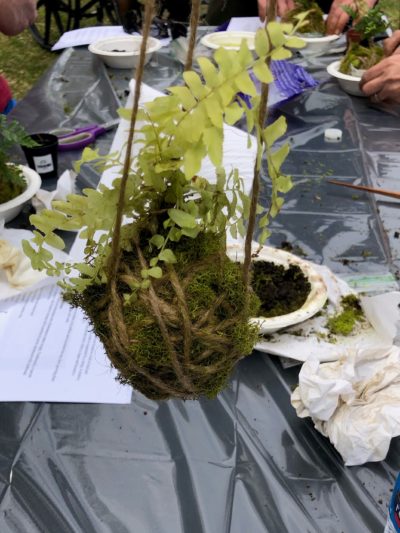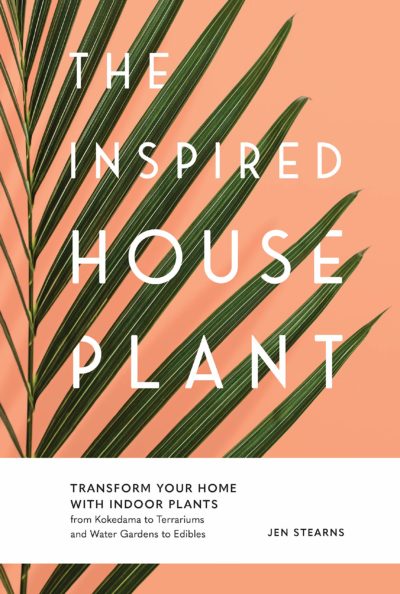
Kokedama is a gardening art practice where a plant’s roots are bound in a ball of mud and wrapped with a sheet of moss. It can be displayed on a dish or suspended by a string. A relative of Bonsai, Kokedama originated during the Edo period (1603-1868) in Japan and became a popular trend in interior design in the ’90s.
The best plants for Kokedama are ferns, ivies, pothos, and succulents but any slow-growing plant that prefers moisture and shade will work.
What you will need:

Directions:
- Combine potting soil with clay and water and shape into a mud ball. Add the water slowly until the mud ball is stable enough to hold its shape. You should be able to gently toss the ball in the air without the ball crumbling.
- Water plant and remove from pot. Gently brush off excess soil so the plant’s roots are bare.
- Separate the mud ball into 2 halves. Place the root system of the plant inside the center of the 2 halves and form the soil back into a firm mudball.
- Wrap the mudball with the sheet of live moss. Starting at the top of the plant, secure the moss with twine or jute string until the plant is secure. You can choose to add extra twine to allow it to hang from the ceiling.
Your Kokedama will last between 2 and 3 years or until the plant’s roots outgrow the size of the moss ball and will need to be replanted.
To water your plant, place it in a bowl of water for 5-10 minutes. The moss ball needs to be at least half submerged and take care not to let the top of the plant get overly wet. Squeeze out the excess water and it’s good to go. It will need to be watered every 2 weeks.
If you need more help, this tutorial from TagawaGardens is very useful.






